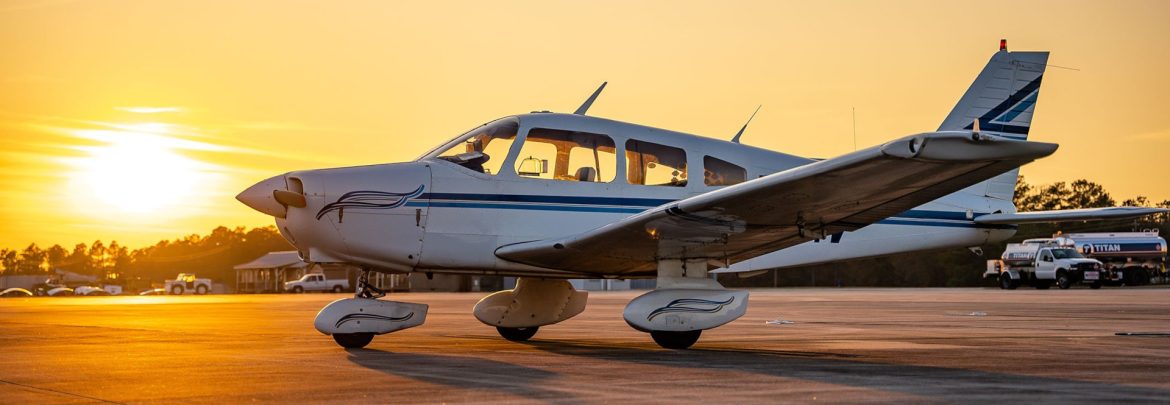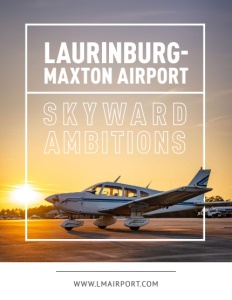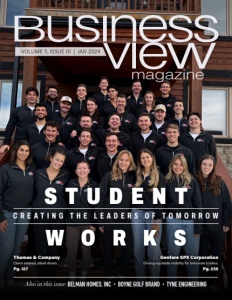Laurinburg-Maxton Airport
Skyward Ambitions: Laurinburg-Maxton’s Journey to Becoming an Aviation Landmark
Flying high into 2024
In the expansive landscapes of North Carolina, the Laurinburg-Maxton Airport inspires modernization and historical richness, steered by the adept leadership of Seth Hatchell, Executive Director of the Southeast Regional Airport Authority.
More than just a common aviation hub, this airport brings a unique twist to its operations, doubling as a water and sewer provider. Its historical roots run deep, tracing back to its days as the Laurinburg-Maxton Army Air Base in 1942, once the largest training ground for World War II glider pilots, a testament to its enduring legacy of American aviation history.
Post-World War II, the airport was handed over to Laurinburg and the town of Maxton. Since then, it has been governed by the Laurinburg-Maxton Airport Commission. However, a shift occurred around 2020 with new legislation from the North Carolina General Assembly, leading to the creation of the Southeast Regional Airport Authority, marking a new era in the airport’s governance.
Today, the Laurinburg-Maxton Airport operates under the guidance of the Southeast Regional Airport Authority and is divided into two main departments. The first focuses on grant management and services as a water and sewer provider to customers, particularly in the industrial park. This includes managing property inventory and ensuring efficient operations.
The second department handles the Fixed Base Operations (FBO). In a significant move in January 2023, the airport brought these operations in-house, a change from the private FBO presence on the field to the 1960s. This transition has allowed for a more integrated and customer-centric approach, with the airport managing fuel sales and hangar facilities and aiming to provide a unique customer service experience.
Modern Operations
Since January, Laurinburg-Maxton Airport has assumed the responsibilities of the Fixed Base Operator (FBO), marking a strategic shift from relying on private FBO services to embracing self-reliance, reflecting its adaptability in the dynamic aviation services sector. In this new role, the airport has showcased significant capabilities, notably selling 100 low-lead Avgas and Jet A fuel with additives and managing an impressive array of 22 hangars—a remarkable feat considering the current high demand for hangar space.
Yet, challenges do exist. Many of these hangars, constructed in the 70s and 80s, now face aging issues and the need for modernization. In response, the airport brought a new set of T hangars 2018 catering to smaller, piston-driven general aviation aircraft. This addition modernized their facilities and addressed the growing demand for hangar space. Yet, with 33 aircraft based and only 22 hangars, the airport still faces a space crunch, leading to some aircraft being permanently tied down on the ramp.
There have been many discussions about introducing regional or commercial services. Hatchell shares his vision for the airport’s growth, emphasizing a desire not to limit the airport’s potential. Whether expanding into cargo services or accommodating regional airliners, the possibility of transforming Laurinburg-Maxton Airport into a more versatile aviation hub remains a key consideration.
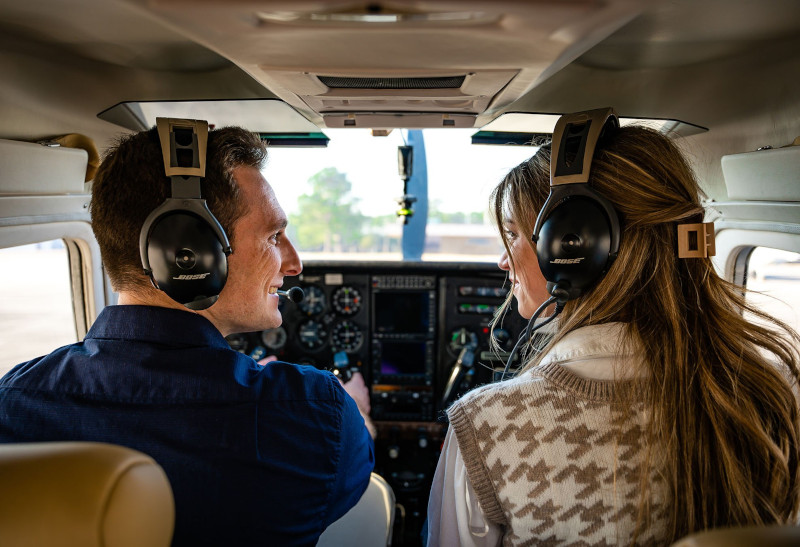
Future Runway Projects
Hatchell highlights North Carolina’s thriving research triangle and its appeal to high-tech companies and executives. Offering more extensive services, such as direct flights to major destinations like Florida, represents both a dream and a strategic objective with significant regional benefits.
One of the most significant upcoming projects Hatchell discusses is a runway extension. The plan to extend the current 6,500 feet runway to an impressive 8,500 feet positions Laurinburg-Maxton Airport as a key player in North Carolina’s aviation landscape. This expansion would rank the airport as having the second-longest non-commercial runway in the state. Such an upgrade is not just about length; it’s a strategic move to enhance the airport’s capacity and capabilities, aligning it with the demands of modern aviation.
Accompanying this runway extension are foundational projects like updating the airport’s layout plan, preliminary engineering, and environmental analysis. A significant aspect of this development is the relocation of airport roads, a necessary step to accommodate the extended runway. These foundational works are essential precursors to the more visible aspects of construction, like asphalt laying and physical building.
Addressing the hangar space issue, Hatchell highlights approving two sets of 10-bay T-hangars. This development addresses the current deficit in hangar space and is a response to the growing demand for aircraft storage facilities. The new hangars, poised to be a crucial addition to the airport’s infrastructure, reflect a thoughtful approach to meeting the aviation community’s needs.
New Terminal Plans
Another exciting development is the potential construction of a new terminal building. The current terminal dates to 1976 and is sturdy but undersized for the airport’s growing operations. Hatchell shares details about the conceptual design for a new terminal, emphasizing the importance of creating a welcoming gateway for travelers. This initiative aligns with a broader trend across North Carolina, where regional airports upgrade their terminals to enhance the passenger experience.
Unique in its offering, Laurinburg-Maxton boasts a remarkable 3,000 acres of land, a legacy of its expansive 1945 acquisition. This vast expanse sets it apart, especially compared to other general aviation airports. Hatchell notes that this land is a veritable goldmine for economic development, with about 1,000 acres primed for such ventures.
The airport’s partnership with the Scotland County Economic Development Corporation is a tribute to its proactive approach to leveraging land assets. As Hatchell points out, this collaboration has traditionally focused on non-aviation industries. There’s a palpable excitement about shifting gears towards aviation-centric businesses, given the airport’s uncongested airspace and strategic location near key North Carolina cities.
As for the existing industrial landscape, Hatchell provides a glimpse into the diversity of companies that call the airport’s industrial park home. The range is impressive, from WePAC, which specializes in package handling, to RHA, an organization that empowers mentally challenged individuals by equipping them with trade skills.
Other notable mentions included Cortiva Agri Science, a player in the agricultural sector, and American Wood Fibers, which produces wood pellets for various applications. The presence of Meritor (now merged with Cummings), a manufacturer of heavy-duty vehicle components, further underscores the industrial park’s diversity. These businesses, though varied, collectively contribute to the vibrant economic ecosystem surrounding the airport.
While currently non-aviation-focused, this industrial melange offers a strong foundation for potential expansion into aviation-related industries. The airport’s advantageous location and resources fueled Hatchell’s vision of tapping into aviation manufacturing, research, and development.
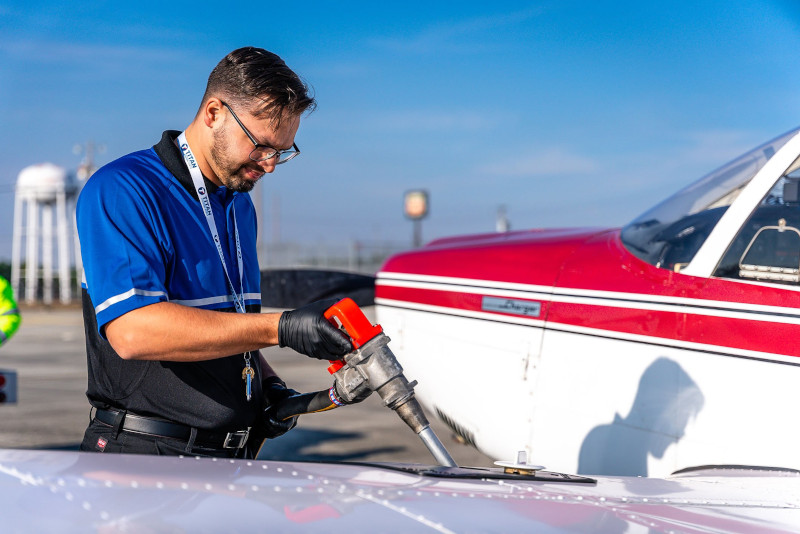
Educational Outreach
Hatchell at Laurinburg-Maxton Airport is deeply invested in nurturing future aviation talent, emphasizing the roles of certified flight instructors and mechanics in building a knowledgeable aviation community. He also seeks to form educational partnerships with local institutions, like St. Andrews University and others, to develop comprehensive aviation-focused curricula. These initiatives, though nascent, aim to cultivate a steady stream of skilled aviation professionals. “Our goal is to introduce more people to the aviation sector, showing them the possibilities beyond being a pilot,” says Hatchell.
Further engaging with the community through school collaborations, the airport hosts events like field trips and career days to broaden young people’s understanding of various aviation careers, an important effort in a region where such opportunities can feel distant. Amidst industry challenges, including the tendency for talent to move to larger cities, Hatchell’s efforts have attracted key aviation personnel to Laurinburg-Maxton, demonstrating the airport’s strategic and appealing environment.
The trickle-down effect of shortages in the aviation sector is palpable, even at smaller airports like Laurinburg-Maxton. Yet, under Hatchell’s stewardship, the airport is not just navigating these challenges but is actively partaking in shaping the industry’s future by fostering new talent and ensuring the continuity of essential aviation services.
Laurinburg-Maxton Airport stands out not only for its diverse traffic, which includes a significant military presence due to its proximity to Fort Liberty and Pope Army Airfield, but also for its burgeoning corporate and general aviation traffic. Hatchell attributes this growth to an unwavering commitment to customer service, a key focus over the past year. This approach has reaped the rewards, with increased aircraft visiting for fuel, training, and the airport’s renowned hospitality.
Hatchell’s Aviation Journey
A native of Laurinburg, North Carolina, Hatchell’s journey in aviation is deeply intertwined with his roots in the community. Despite growing up near the airport, his discovery came later, fueling a passion for aviation that led him to pursue an aeronautics degree and pilot training at Liberty University.
Returning home, Hatchell embarked on an aviation management career, culminating in his appointment as Executive Director of Laurinburg-Maxton Airport. “I grew up here in Laurinburg and discovered my passion for aviation later in life. Now, I’m back home, working to make a difference in the community that raised me.” His story is full circle – from a local boy unaware of the airport in his hometown to leading the same facility into a new era of growth and innovation.
From his office, with its picturesque view of the runway and taxiway, Hatchell is constantly reminded of his deep love for aviation and weighty responsibilities. His steady motivation is driven by an earnest desire to uplift the airport’s significance within the community, bolster traffic, draw in industry, and invigorate the economic landscape of Scotland and Robison Counties.
Laurinburg-Maxton Airport surpasses its basic function as a landing and takeoff point. It emerges as a vibrant symbol of community, a nurturing ground for aviation enthusiasts, and a powerful demonstration of the impactful returns of investing one’s passion and skills back into one’s hometown.
AT A GLANCE
Laurinburg-Maxton Airport
What: Laurinburg-Maxton Airport focuses on its expansion, community impact, and role in shaping the future of regional aviation in North Carolina.
Where: Maxton, North Carolina
Website: https://www.lmairport.com/
